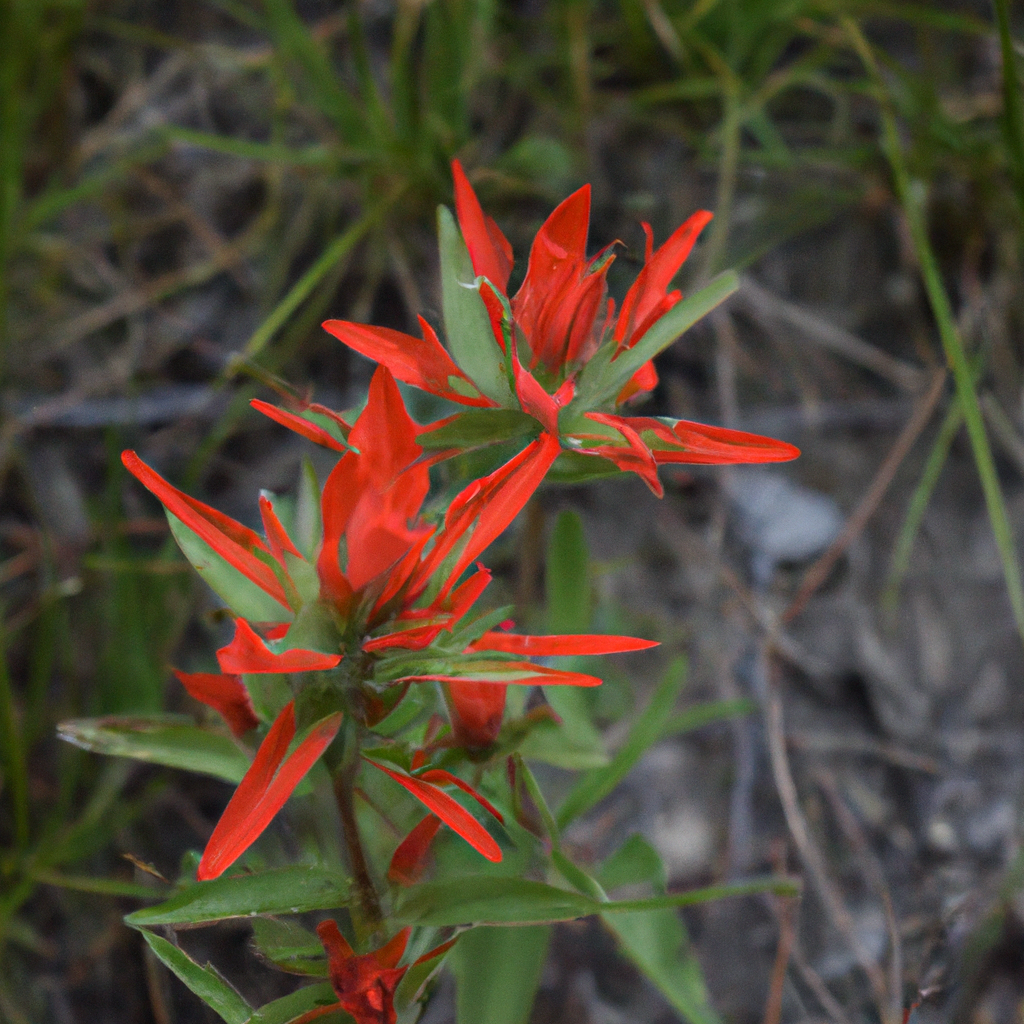Biological Name:
Castilleja coccinea (Scarlet-Indian-Paintbrush)
Natural Habitat:
Scarlet-Indian-Paintbrush: Grasslands, North America
Description:
Scarlet-Indian-Paintbrush also known as Castilleja is a plant that is native to grassland and prairie regions of North America. It is a herbaceous annual or perennial that can grow up to two feet tall and it has small green leaves and showy red or orange flowers that bloom in the summer. The plant is often found in areas with poor
Frequently Asked Questions (FAQs)
Q: How long do Indian paintbrushes bloom?
A: Blooming from April to September allows for plenty of time to spot these show-offs growing in fields, mountain meadows, stream banks, open woods, and along low coasts. Indian paintbrush can be as low-growing as a few inches, or as tall as three feet depending on location and species.
Source
Q: What is a good host plant for Indian paintbrush?
A: Good host plants include little bluestem (Schizachyrium scoparium), beardtongue (Penstemon), and blue-eyed grass (Sisyrinchium angustifolium). Seeding is the best way to plant Indian paintbrush because container-grown plants are difficult to transplant.
Source
Q: Do Indian paintbrushes spread?
A: The plant is short-lived and dies after it sets seed. However, if conditions are right, Indian paintbrush reseeds itself every autumn. This unpredictable wildflower grows when it is planted in close proximity with other plants, primarily grasses or native plants such as penstemon or blue-eyed grass.
Source
Q: Is Indian paintbrush a parasite?
A: Indian paintbrushes are only semi-parasitic. The brightly colored wildflower steals water and nutrients from other plants using modified tube-like roots called haustoria. These roots reach into the soil until they touch the roots of other plants, penetrating them to suck out the food.
Source
Q: Do hummingbirds like Indian paintbrush?
A: Indian Paintbrush is a perfect hummingbird flower – hummingbirds are attracted to red, and they can reach to the bottom of the long narrow throats of the flowers with their slender bills. Here’s a closeup of an Indian Paintbrush flower. The bright red actually comes from modified leaves, not from the flower.
Source
Q: What does Indian paintbrush smell like?
A: Hummingbirds are attracted to color red, have no sense of smell, and need large amounts of nectar – paintbrush have little to no scent and produce abundant nectar.
Source
Q: What do Native Americans call Indian paintbrush?
A: Indian Paintbrush – Officially known as Castilleja, and also called Prairie-fire, this is a genus of about 200 species of Broomrape family that are native to the west of the Americas from Alaska south to the Andes.
Source
Q: Why did Native Americans wear red paint?
A: Native American Face Paint Colour Meaning For example, RED stood for power, success, fighting and hunting prowess. Additionally, because hunting and victory in war were essential to the tribe’s survival, they also stood for joy and beauty. Iron oxides, roots, berries, beets, and ochre were used to make red face paint.
Source
Q: Why did Native Americans paint themselves white?
A: WHITE was the color of peace, prosperity, safety. But it could also mean mourning. Made from gypsum, limestone, clay, eggshells or seashells. Pawnee scouts painted their faces white to acquire the hunting power of the wolf.
Source
Q: Why do natives paint their face?
A: The painting of a man’s face and body among the plains tribes during the buffalo days was said to be a form of mental conditioning. Warriors would paint themselves with personal protective designs and colors before they engaged in battle with an enemy. Hence the stereotypical term “war paint.â€
Source
Q: Can Indian paintbrush be purple?
A: Castilleja purpurea var. purpurea, Purple Paintbrush, has the widest range of natural colors of any of the three varieties of its species, C. purpurea, usually some shade of purple, but occasionally also shades of red, orange, yellow, or white.
Source
Q: What is a white Indian called?
A: White Native Americans may refer to: Mestizo, a term used in Central and South America to refer to a person of combined European and Indigenous American descent. Métis, an ethnic group in Canada and parts of the United States of mixed Indigenous North American and European descent.
Source
Q: Is the Indian paintbrush flower poisonous?
A: Ironically, this plant was used by Native Americans as both a love charm in food and as a poison used to against their enemies, as this species is known to have toxic properties.
Source
Q: Is Indian paintbrush toxic to dogs?
A: Castilleja coccinea doesn’t suffer from any serious insect or disease problems. Avoid planting Indian paintbrushes in areas where animals, pets, or children may be tempted to eat the plant. While it’s not toxic, the Indian paintbrush contains high levels of selenium.
Source
Q: Is Indian paintbrush invasive?
A: One of the threats facing Christ’s Indian Paintbrush is invasive species that have established themselves in this mountain meadow. Photo by Teresa Prendusi. The long-term effect of global climate change on this population that is only known from atop Mt.
Source
Q: Is Indian paintbrush toxic to animals?
A: Indian paintbrush poisoning in horses can be fatal. The biennial plant Indian paintbrush (prairie-fire) is capable of storing high levels of selenium, which is toxic if ingested by a horse. The scientific name for Indian paintbrush is Castilleja.
Source
Q: Do butterflies like Indian paintbrush?
A: Coast indian paintbrush (Castilleja affinis) is a perennial herb native to the west coast of North America. It has bright reddish-orange flowers that bloom in spring. Attracts butterflies, moths and caterpillars.
Source
Q: What can I plant with Indian paintbrush?
A: Good host plants include little bluestem (Schizachyrium scoparium), beardtongue (Penstemon), and blue-eyed grass (Sisyrinchium angustifolium). Seeding is the best way to plant Indian paintbrush because container-grown plants are difficult to transplant.
Source

